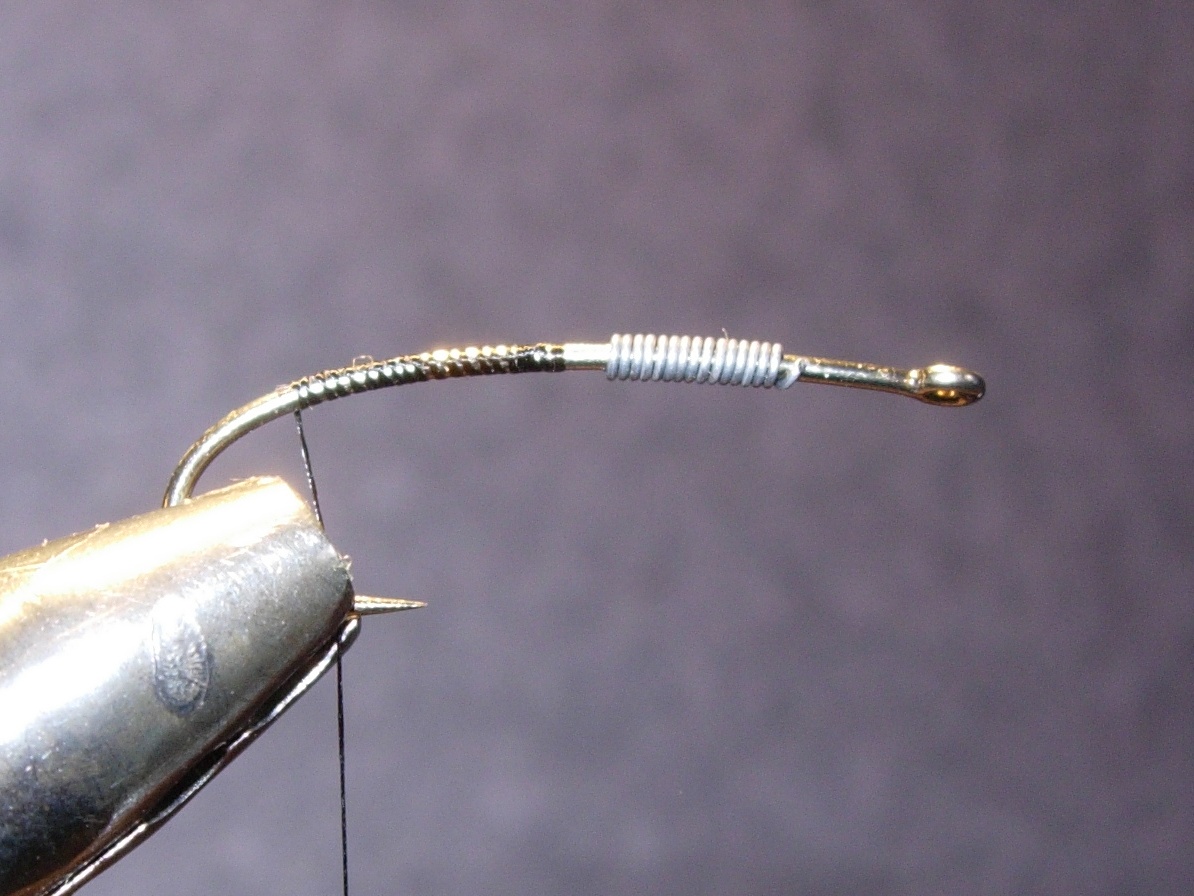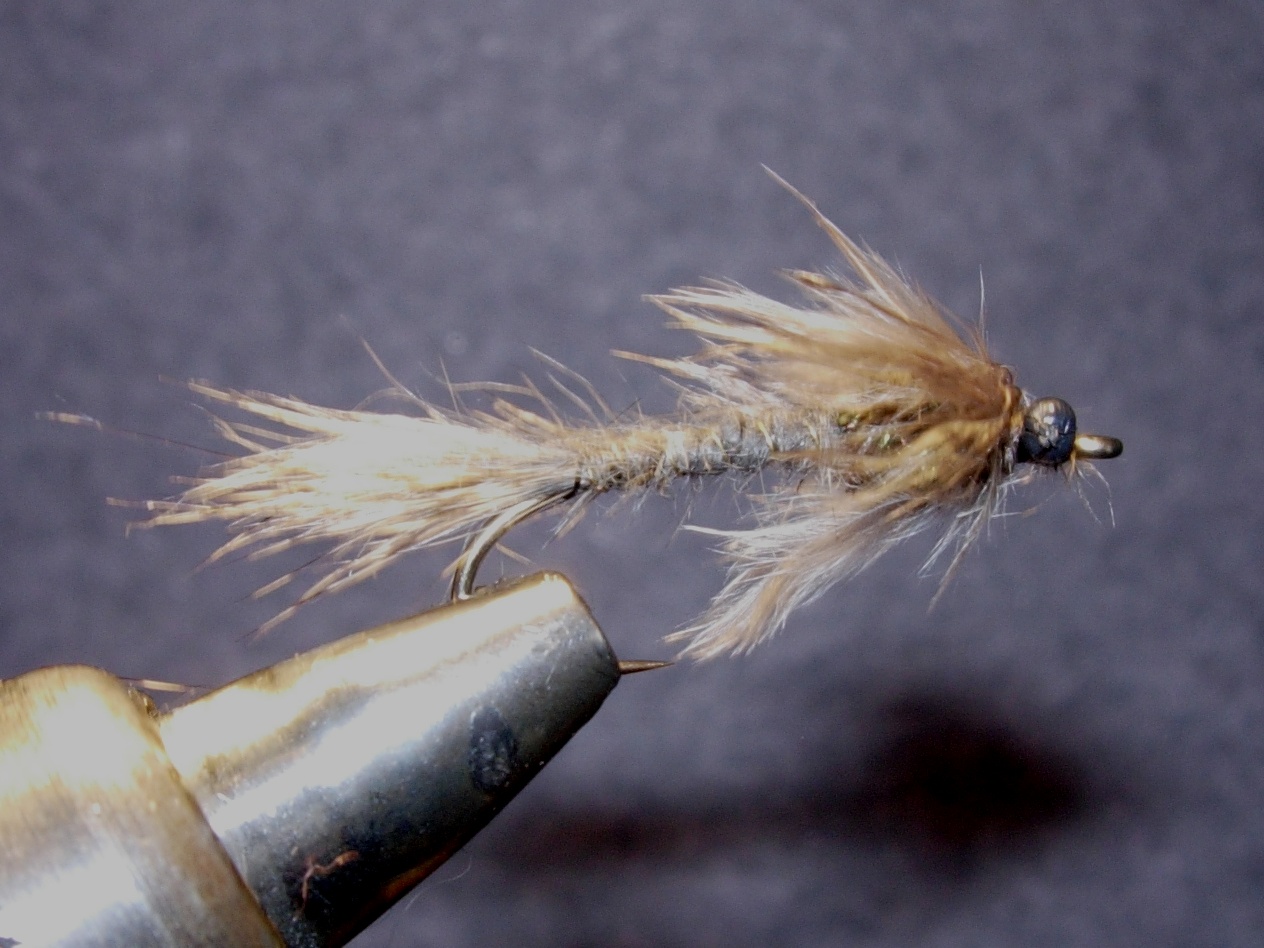Description
Trout fishing is a passion (and a job) for
me. Nevertheless, bass and pan fish fishing
is also high on the list. This has given me
the opportunity to create some new
patterns–some (but not all) of which have
been successful. The Billywog is one of my
successful still water creations.
Bass love frogs. Pollywogs–immature
frogs–are plentiful and easy prey. So it’s a
no-brainer: You need a pollywog pattern in
your bass fly box. This fly is so simple it
will make you laugh. Well then, all the
better–because I favor simplicity. Fish it
with short strips; if that doesn't work, try
variations in stripping speed and length.
Visualize the soft after-shaft feather
moving suggestively as you strip, with a
predatory bass eying the passing morsel.
Hang on! Here he comes!
P.S.–the Billywog may also suggest a swimming
damsel nymph.
Tying Instructions
|
|
1. De-barb the hook and cover the
rear half of the shank with
thread; add weight at the thorax
area, if desired.
|

|
|
2.
Take a small bunch of muskrat fur
and tie it in as a short tail at the
hook bend, just above the back end
of the barb.
|
 |
|
3.
Tie in a piece of gold wire for the
rib, at the same point that you tied
in the tail. Dub a slim body up to a
point just forward of the halfway
point of the shank. Counter-wind the
rib forward to this same point, tie
it off, and trim the excess.
|
 |
|
4.
Tie in 4 strands of peacock herl by
the tips, at this same point.
Strengthen them by wrapping them
around the tying thread. Now take
the herl and thread together, and
wrap a nice thorax forward to a
point about 2 eye-lengths behind the
eye of the hook.
|
 |
|
5.
If you opt for mono eyes, tie them
in now, about 1 eye-length behind
the eye of the hook.
|
 |
|
6.
Just behind the eyes, or at the
point where the herl thorax ends (if
you choose not to use eyes), tie in
an immature feather (called an
“after-shaft”) from a pheasant back;
it should be tied in by its tip. You
will find these feathers behind the
main, larger feathers on the back.
Before tying it in, trim the feather
material from one side of the
feather.
7.
Take two or three wraps of the
after-shaft, stroking it back so it
sweeps back over the thorax; tie it
off and trim the excess. Care must
be taken in handling these feathers,
as they are quite fragile.
8.
Form a nice, small head with the
tying thread.
|
 |
|
|
Now go fish your Billywog. Spring is
near and. if it’s warm enough, the
bass will be in shallower water. See
ya on the creek...!!!
 |
|
